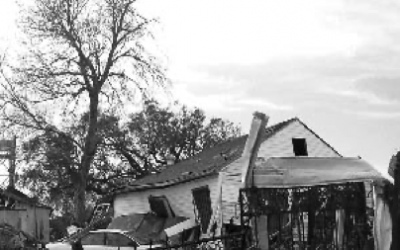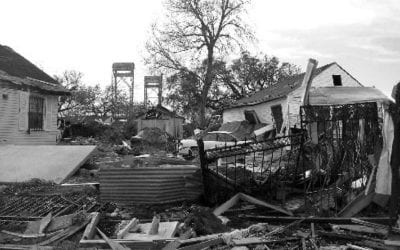Climate Change
While those of us on the East Coast have noted and hardly complained about the warm winter weather, including record-breaking absence of snow in Central Park or cherry blossoms in Washington in January instead of April, other aspects of this year’s climate shift have hit much harder in the state of Rio de Janeiro, Brazil. Torrential rains fell for weeks, leading to mud slides and dozens of deaths. Thousands lost their homes. States of emergency were declared. The housing stock in Brazil is often of low quality, including homes built poorly on steep slopes, setting the stage for negative effects from nature’s forces. Emergency response units are also less well equipped to respond than, for example, their counterparts in the United States.
Climate change is about increased variability. This means, for example, instead of 6-8 hurricanes of category 3 to 4 each year, there can be some years with no hurricanes (formerly an infrequent occurrence) and some years with many more hurricanes (formerly an infrequent occurrence). Moreover, some of the hurricanes may be weaker and some of them may be stronger. We call this variability, as represented in the 2005 and 2006 hurricane seasons. Of course, the more frequent and stronger natural disasters (whether they be hurricanes, tornados, rains, and so on) in the tail end of the variability are the concern of modern society and, along with energy prices and security, probably the ultimate motivation that the U.S. government is expected to take some actions in the next few years to regulate greenhouse gases. We tend to clamor less because of the absence of widespread negative societal impacts, but we should nevertheless be just as concerned by variability in the other end of the tail, i.e., the reduced hurricane number in 2006 or the warm weather in New England this year, because of what it portends about overall increased variability.
Why, if the world is on average getting warmer, do we also get an increase in variability? There are a number of reasons, which in the particular are tied to the increase in water vapor flux and therefore latent heat energy at warmer temperatures. In the abstract, however, we can also understand that the earth climate system had attained some relative steady state of checks and balances over hundreds of years and that now, by global warming, we are pushing that system strongly towards a different steady state. The ride between there and here is very bumpy as the system accommodates the changes, and these stresses lead to greater variability.
Winter 2007, Volume VI, Number 2
Scot T. Martin, Gordon McKay Professor of Environmental Chemistry, will spend his sabbatical year in 2007/8 at the University of São Paulo working on the connections among Amazonian vegetation, atmospheric particles, and clouds. He teaches an introductory course, “ES6 Environmental Science and Technology,” in the College.
Related Articles
On Hurricanes: My Favorite Metaphor
The hurricane is my favorite metaphor for the study of both Cuba and political science. Living through hurricanes as a little boy predisposed me to study both. Hurricanes combine certainty…
The Winds of Justice
n the wake of Hurricane Katrina, Arsalan Suleman, a third-year Harvard Law School student from Kenner,Louisiana, was one of the 240 students from 57 law schools who traveled to…
Hurricane Katrina and the Re-Latinization of New Orleans
One of the things that was most immediately obvious to those of us working in relief shelters in the aftermath of Hurricane Katrina was the relative absence of the color brown. Race relations in…




